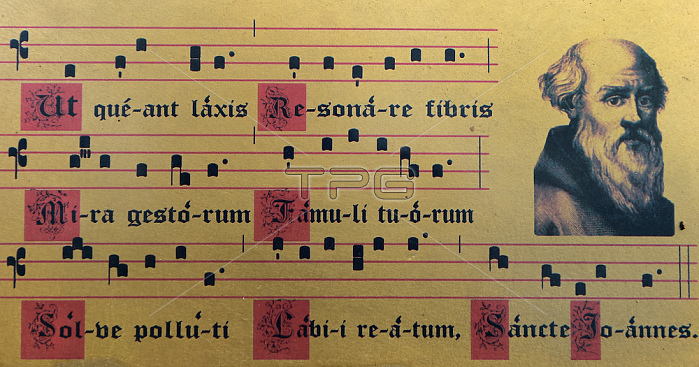
'Ut queant laxis' or 'Hymnus in Ioannem' is a Latin hymn in honour of Saint John the Baptist. Traditionally attributed to Paulus Diaconus; the eighth-century Lombard historian. It is famous for its part in the history of musical notation; in particular solmization. The hymn is sung to a Gregorian chant; the original do-re-mi music. The chant is useful for teaching singing because of the way it uses successive notes of the scale: the first six musical phrases of each stanza begin on a successively higher notes of the hexachord; giving ut;re;mi;fa;so;la though ut is replaced by do in modern solf鑗e. For the seventh note of the diatonic scale; subsequent convention chose the syllable si; a contraction of the first two initials in Sancte Iohannes. The naming of the notes of the hexachord by the first syllable of each hemistich (half line of verse) of the first verse is usually attributed to Guido of Arezzo.RIGHT: Guido of Arezzo (also Guido Monaco; Guido d'Arezzo; Guy of Arezzo; Guy d'Arezzo) (992 - c 1033) Italian music theorist of the Medieval era. He is regarded as the inventor of modern musical notation. Guido was a Benedictine monk from the Italian city-state of Arezzo (Tuscany)Arezzo;Tuscany; Italy (2018)
| px | px | dpi | = | cm | x | cm | = | MB |
Details
Creative#:
TOP24915016
Source:
達志影像
Authorization Type:
RM
Release Information:
須由TPG 完整授權
Model Release:
No
Property Release:
No
Right to Privacy:
No
Same folder images:

 Loading
Loading